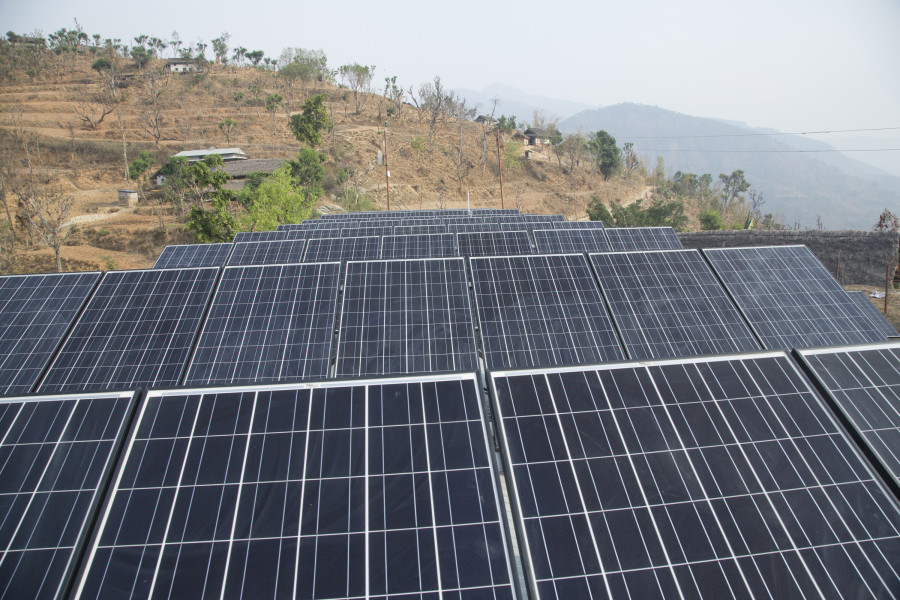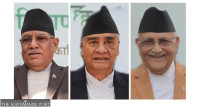National
Role of solar in Nepal’s energy mix looks set to expand
Energy mix of Nepal, which till date is dominated by hydropower, is expected to be more diverse in coming years with more private developers showing interest in installing solar plants in different locations.
Bibek Subedi
Energy mix of Nepal, which till date is dominated by hydropower, is expected to be more diverse in coming years with more private developers showing interest in installing solar plants in different locations.
In this fiscal year alone, the Department of Electricity Development (DoED) has awarded survey licences to various developers willing to install solar plants at 21 different locations within the country. The combined installed capacity of these solar plants will be 317.14MW which will account for almost 70 percent of the total installed capacity of 56 solar plants that have received survey licence from the department till date.
The largest among them is 120MW Solar PV Project Dhalkebar in Mahottari district owned by Chaudhary Group, one of the biggest business houses of the country. Similarly, the second and third largest plants are 50MW Solar PV Project Barju in Sunsari and 30MW Parwanipur Solar Farm in Parsa—both owned by the same group, according to the department.
The increased attraction of the private sector towards the solar plant, according to Madhu Prasad Bhetuwal, director general at the DoED, is due to two factors—fall in price of photovoltaic solar panels in the international market and good power purchase rate offered by the Nepal Electricity Authority (NEA), the state-owned power utility and sole off-taker of electricity generated in the country.
The power utility purchases solar electricity from the developer at Rs7.30 per unit as fixed by the Guidelines for Development of Alternative Electricity Connected to Grid issued by the Energy Ministry in February 2018.
“At a time when prices of solar panel are falling in the international market, the rate offered by the NEA is lucrative,” said Bhetuwal. “This will lead to entry of more players in coming days.”
Similarly, the government policy to increase the share of solar electricity in the total energy mix of the country has been another reason behind developer’s preference to solar power.
As per the white paper on the ‘current status and future roadmap’ of the energy sector of the country, issued by the Energy Ministry, Nepal should have 5 to 10 percent of alternative renewable energy like solar electricity in its total energy mix. This prompted the electricity authority to gear up for increasing solar power in its total energy mix.
To date, the power utility has signed power purchase agreements with 12 solar projects with combined installed capacity of 53.14MW. Similarly, the electricity authority has selected five private developers to build solar power plants at five locations and supply electricity generated to its nearest substations.
The power utility has also signed an agreement with Manila-based multilateral lender Asian Development Bank to provide viability gap funding worth $18.5 million to these five developers of the solar plants with a combined installed capacity of 24MW.
Moreover, the NEA is negotiating with six other developers of solar plants with a combined installed capacity of 59.61MW.
“As we have to maintain a certain portion of alternative renewable energy in our total energy portfolio, the portion of solar energy in our energy mix will increase proportionately with the hydroelectricity,” said Prabal Adhikari, chief of power trading department at the NEA.




 6.1°C Kathmandu
6.1°C Kathmandu










%20(1).jpg&w=300&height=200)




